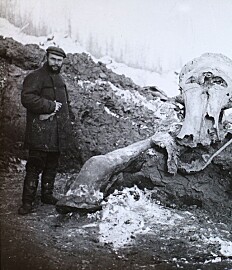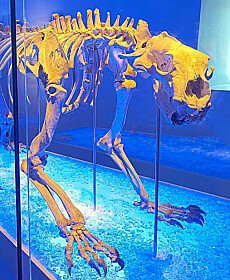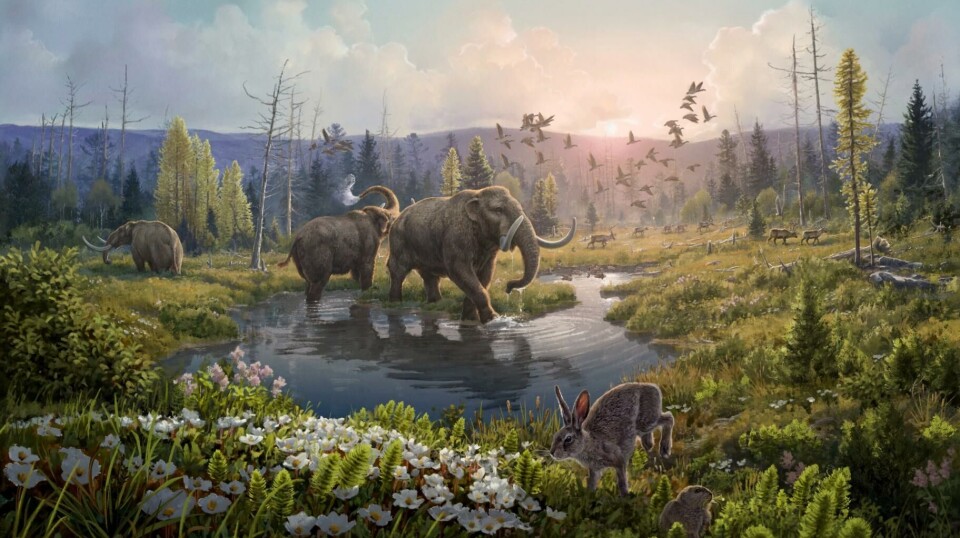
World's oldest DNA: Scientists discover 2-million-year-old remains of plants and animals
Genetic material from the elephant relative mastodon, cedar and spruce has now been discovered in a warmer Greenland of yore. It is the oldest DNA ever found.
Research into ancient DNA has accelerated in recent years. Scientists have managed to extract DNA from old bones, from soil in caves and from the bottom of lakes.
The remains of the genetic material can tell us about nature and people in the past.
In 2021, researchers announced the discovery of the world's oldest DNA. It came from mammoths that lived about a million years ago.
Now a Danish-led research group has uncovered DNA from Greenland that is roughly twice as old. The study has been published in the journal Nature.
Hereditary material from mastodons, cedar, birch, reindeer, geese and many more species reveals information about the ecosystem in Greenland in the first part of the Quaternary, the period that includes the ice ages.
Researchers at UiT Norway's Arctic University (UiT) participated in the study.
Breaking boundaries
“DNA can degrade quickly but we’ve shown that under the right circumstances, we can now go back further in time than anyone could have dared imagine,” Professor Eske Willerslev said in a press release.
He is the director of the Lundbeck Foundation GeoGenetics Center at the University of Copenhagen.
This time, the researchers did not extract DNA from bones, but from sediments.
Sediments are loose masses that have accumulated on land or at the bottom of bodies of water. They consist of pieces and particles of rock, soil or biological material.

A warmer Greenland
The researchers have analysed 41 samples taken from a hundred-metre-thick collection of sediments at the mouth of a fjord in the north of Greenland. The place is called Kap København, or Cape Copenhagen in English.
The sediments built up over 20 000 years during an interglacial period approximately two million years ago. At that time, Greenland was more than ten degrees warmer than it is today.
For the past 2.6 million years, the Earth has gone into and come out of multiple ice ages, alternating with shorter, warmer interglacial periods.
“The ancient DNA samples were found buried deep in sediment that had built-up over 20,000 years. The sediment was eventually preserved in ice or permafrost and, crucially, not disturbed by humans for two million years,” says Kurt H. Kjær, a professor at the Lundbeck Foundation GeoGenetics Centre who was also involved in the study.
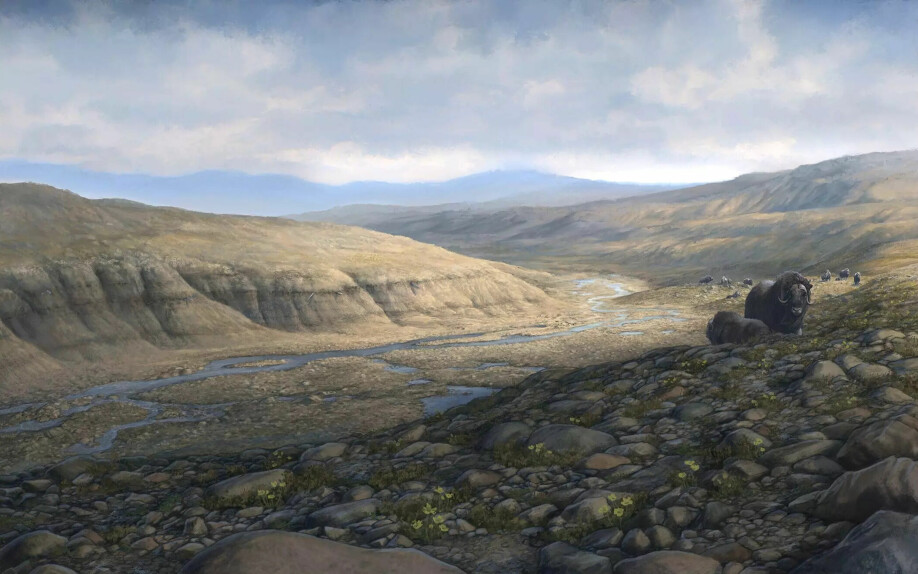
Did a forest exist there?
In the samples, the researchers found fragments of DNA from an ecosystem in Greenland that was different from today's. It used to be a greener and warmer island.
Today, approximately 81 per cent of Greenland is covered by ice all year round, according to the Norwegian online encyclopaedia, Store Norske Leksikon.
Two million years ago, several types of trees grew on the island, the DNA analysis showed.
“We’ve had a lot of discussions about whether it was a forest or just some scattered trees,” says Inger Greve Alsos.
She is a professor of biology at UiT and participated in the study.
“We believe that the landscape consisted of more scattered trees and a lot of tundra, based on the fact that there were also so many arctic species present,” Alsos says.
The researchers’ finds include traces of birch, aspen and willow.
“We also found hawthorn, yew and cedar. No species at all are associated with the Arctic today,” says Alsos.

Mastodon and reindeer
In addition, traces of some of the animal life appeared.
It turned out that mastodons lived in Greenland at this time. They were huge elephant-like animals that lived in North and Central America until they died out around 10 000 years ago.
The study shows that these Ice Age animals spread north all the way to Greenland.
The researchers also found DNA from reindeer, hares, geese and lemmings, animals that are still found in Greenland today.
Shows development of Arctic species
As for the ancient plant life, Alsos says that it included a mixture of boreal forest and Arctic species that we know today. Boreal forest is coniferous forest that grows in Norway, Canada and in northern regions.
For example, the researchers found meadowsweet in old Greenland. Meadowsweet is common in Norway but is not found in Arctic areas today.
Of 102 plant genera, 39 per cent no longer grow in Greenland but are found in forests in North America today. Examples include spruce, cedar and hawthorn.
“This is the time that the cooling of the Earth began. We have to remember that Arctic vegetation is only about 2 to 2.5 million years old,” says Alsos.
The new study allows the researchers to look back at the development of plant life as temperatures were starting to get really cold in the north.
“There were cold high alpine areas like today’s Himalayas, for example. The new study supports our theory that the Arctic vegetation is partly from former alpine species and partly from the boreal forest,” Alsos says.
The boreal forest used to stretch all the way to the north of Greenland.
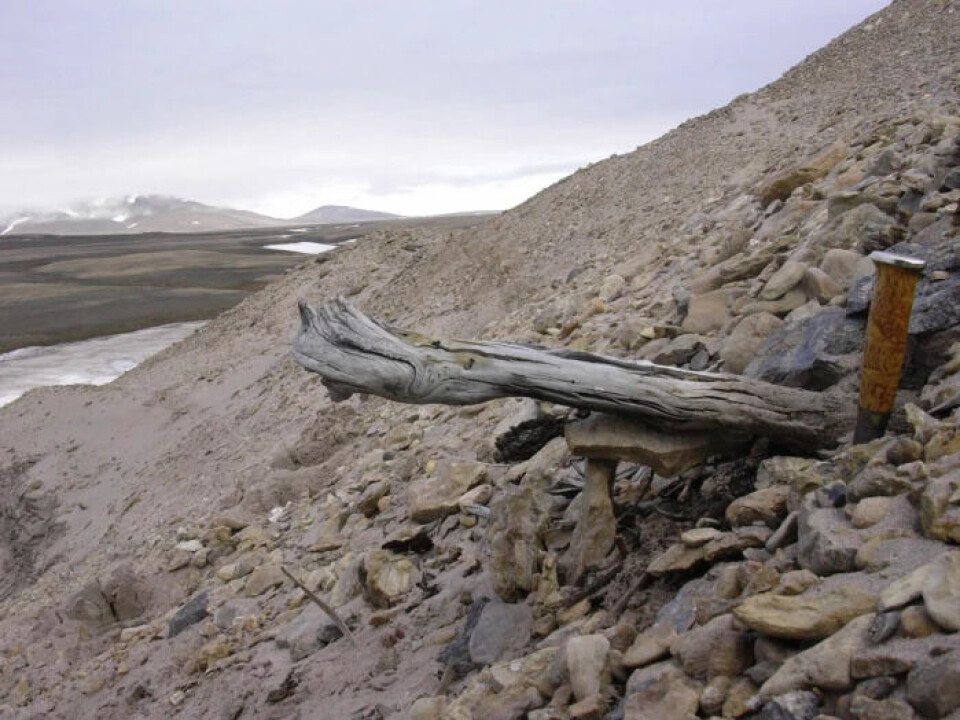
Ancestors
From some species, the researchers had enough material to make a genetic comparison with species that now live in the area.
They found out that the species living in the region two million years ago are the progenitors, or ancestors, of today's species.
“We can observe this ancestral connection with both the animals and the plants,” says Alsos.
This finding is actually what we expected, she says.
“They lived two million years earlier, so it follows that they would be ancestors of today’s species. But it’s nice to see that the genetics correspond to our expectations, which was the case for the birch, aspen and willow species, as well as for the animals we compared.”
Provides insight into ecosystems of the past
Alexandra Rouillard is a postdoctoral fellow in the Department of Geosciences at UiT. She also participated in the study.
“It’s astonishing to imagine that today's polar desert in the high Arctic once had a habitat that was lush enough to sustain megafauna and 'open forest' type plants,” says Rouillard.
Nor was it actually that long ago, when we consider that the tectonic plates were in the same place as today, she points out.
“These plants and animals still had to survive the polar night, meaning they were adapted to it in some way,” says Rouillard.
Anne Elisabeth Bjune is a professor at the University of Bergen and a researcher at the Bjerknes Center for Climate Research. She works with past vegetation and climate history using plant remains, and did not participate in the study.
“The new environmental DNA data that is being presented from Greenland gives us good insight into the ecosystems of the past, for both plants and animals, and from land and sea,” says Bjune.
“The data itself is important, as well as the methodological development that researchers made in this study,” she says.
Bjune notes that the data are important for two reasons: they represent a time period about which we do not have much detailed knowledge, and they give us a better understanding of the composition of ecosystems in a climate that is expected in the future.
Broken into small bits
The DNA found by the researchers was damaged and broken into many small pieces after so many millennia in the ground.
“The sequences are very short, which is to be expected when the DNA is this old,” says Alsos.
“When you have such short sequences, you need to have quite a lot of DNA samples to be certain of what you’re identifying. If not, you could get a random match.”
To figure out what kind of DNA was in the sample, the fragments were matched with DNA from today's species that have had their entire genomes mapped.
The reference library at UiT was important for this work. It consists of plants in the herbarium at Tromsø Museum. The library contains over 1 500 plant genomes that have been used to identify the type of DNA present in the samples.
Libraries like this one are important tools, says Alsos.
She believes there was certainly DNA from many other organisms in the samples as well, such as various insects, moss and lichen.
“We haven’t been able to extract it, because we don’t have full genome sequences. When we say that we’ve uncovered an ecosystem, the main focus is still on the large vascular plants and mammals.”
Preserved in clay and quartz
DNA this old carries a high risk of contamination. Alsos says that a strength of this study is that researchers discovered ancient pollen and fossils of many of the same genera or species from which they found DNA.
“The congruence between the two is strong, and is convincing to me that this is correct. And then of course you look at the pattern of damage which shows that the DNA is old.”
Good preservation conditions made it possible to find DNA from two million years ago.
“The place is about as far north as you can get in the Arctic. Low temperatures preserve DNA,” says Alsos.
The researchers extracted DNA from clay, smectite and quartz in the sediments. Smectite is a group of clay minerals that swell in contact with water.
“We know that clay binds to DNA very well. Smectite binds to it even better. If the DNA is loose, microorganisms will just eat it up and it will degrade. But if it’s chemically bound, it is preserved better,” says Alsos.
Theoretical studies on how long DNA can be preserved have been based on bones, says Alsos.
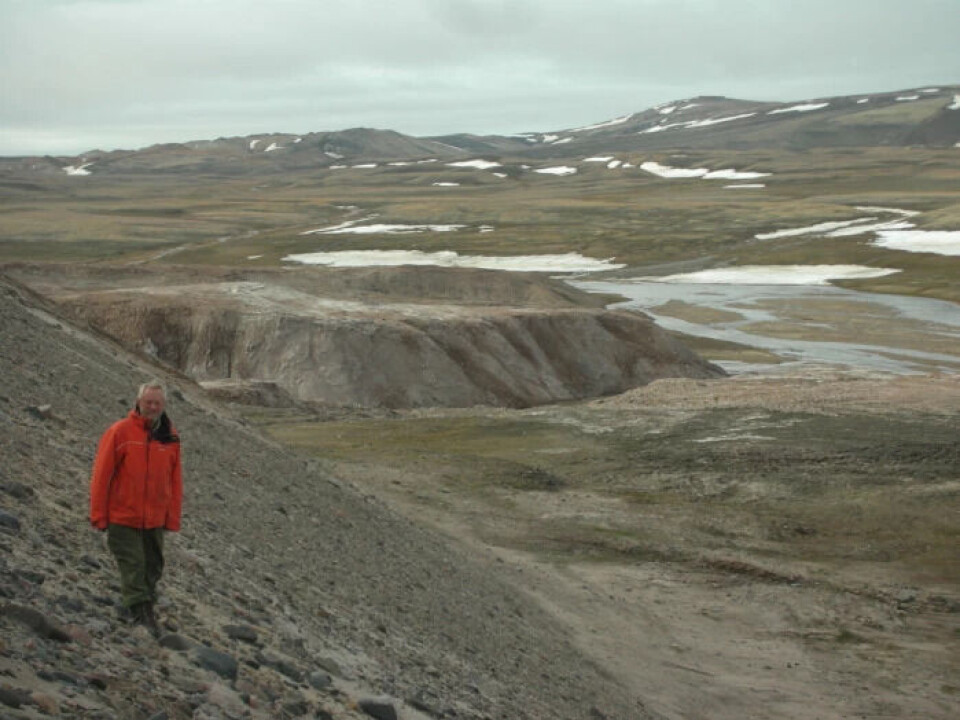
Has the limit been reached?
Rouillard thinks one of the most exciting things about the new research is the age of the DNA.
“From a technical point of view, the data presented in this article are pushing the limits of what we might be able to detect using DNA going back millions of years,” says Rouillard.
Will the record be broken again, or have scientists reached the limit for how far back it is possible to find DNA?
Alsos says that’s difficult to say because we’ve believed before that we’d reached the limit.
“If there’s one thing that really characterizes research into ancient DNA, it’s that you keep breaking boundaries. But we’re probably at the theoretical lower end of the limit for how far back we can go.”
The research field is only about 20 years old, says Alsos.
In any case, a lot of exciting research from the last 2 million years remains to be done.
“Within the research field, we haven't really looked that much at such old samples, because we didn’t know that it’s possible to find DNA in them. The vast majority of ancient DNA studies are less than 50 000 years old.”
“I think now we’ll look for more places that have older sediments and see what we can find,” says Alsos.
Reference:
Kurt H. Kjær et.al.: A 2-million-year-old ecosystem in Greenland uncovered by environmental DNA. Nature, 2022.
———








